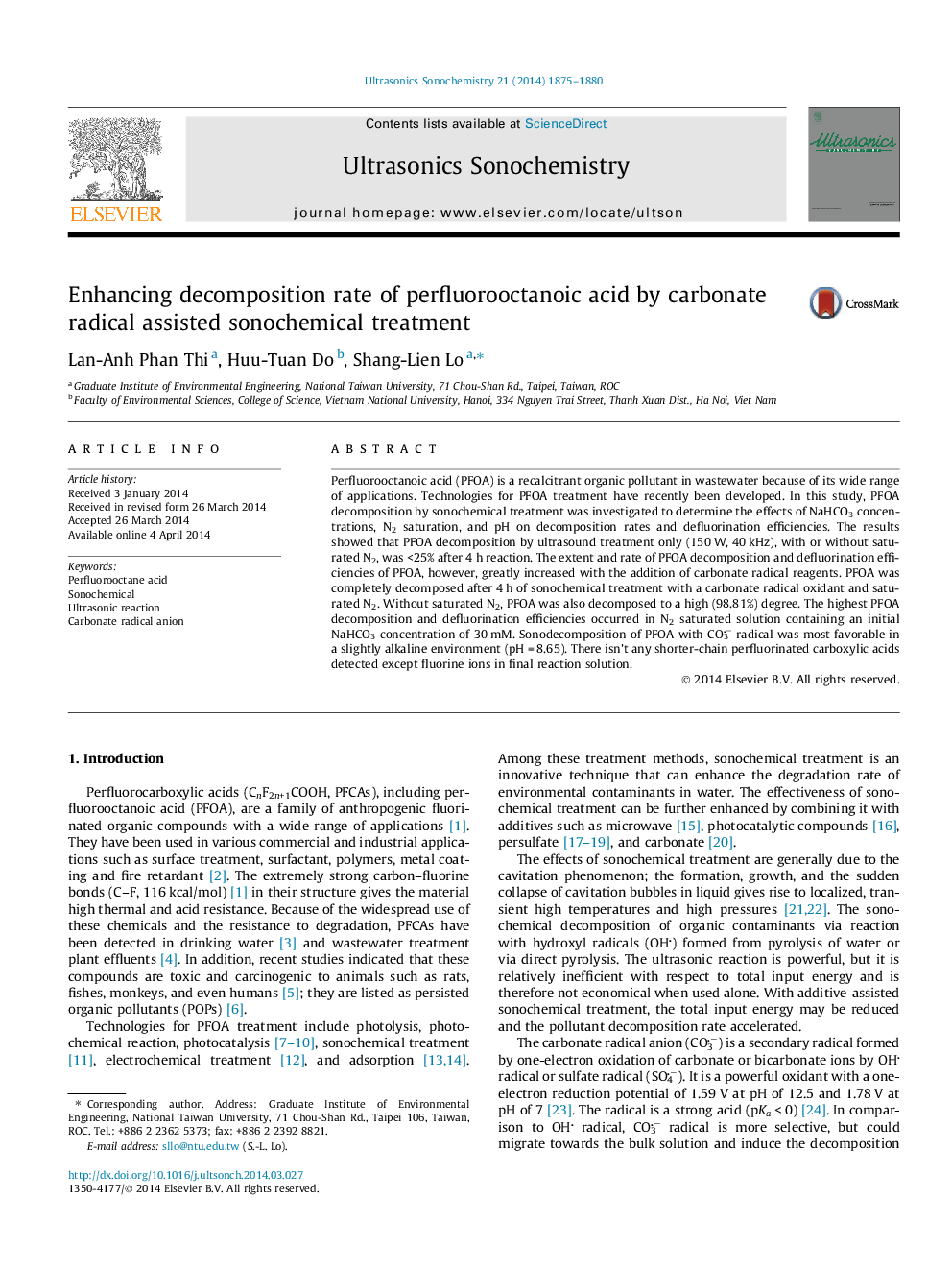| Article ID | Journal | Published Year | Pages | File Type |
|---|---|---|---|---|
| 1266114 | Ultrasonics Sonochemistry | 2014 | 6 Pages |
•100% of PFOA was decomposed after 4 h of sonochemical treatment with CO3− and N2.•The highest PFOA decomposition occurred in N2 saturated solution with 30 mM of NaHCO3.•Decomposing PFOA with CO3− is more favorable in a slightly alkaline solution.•There isn’t any organo-fluorines intermediate detected except F− in final solution.
Perfluorooctanoic acid (PFOA) is a recalcitrant organic pollutant in wastewater because of its wide range of applications. Technologies for PFOA treatment have recently been developed. In this study, PFOA decomposition by sonochemical treatment was investigated to determine the effects of NaHCO3 concentrations, N2 saturation, and pH on decomposition rates and defluorination efficiencies. The results showed that PFOA decomposition by ultrasound treatment only (150 W, 40 kHz), with or without saturated N2, was <25% after 4 h reaction. The extent and rate of PFOA decomposition and defluorination efficiencies of PFOA, however, greatly increased with the addition of carbonate radical reagents. PFOA was completely decomposed after 4 h of sonochemical treatment with a carbonate radical oxidant and saturated N2. Without saturated N2, PFOA was also decomposed to a high (98.81%) degree. The highest PFOA decomposition and defluorination efficiencies occurred in N2 saturated solution containing an initial NaHCO3 concentration of 30 mM. Sonodecomposition of PFOA with CO3− radical was most favorable in a slightly alkaline environment (pH = 8.65). There isn’t any shorter-chain perfluorinated carboxylic acids detected except fluorine ions in final reaction solution.
